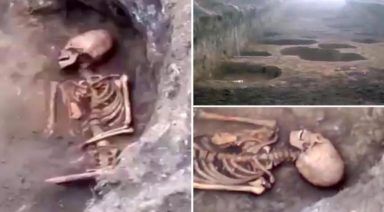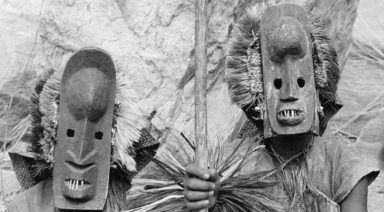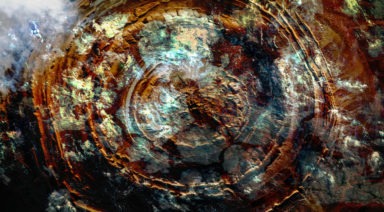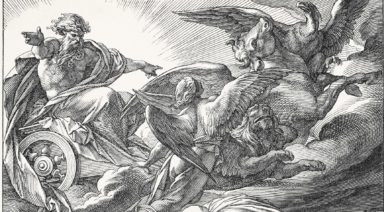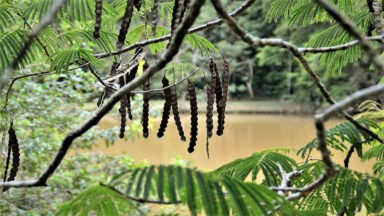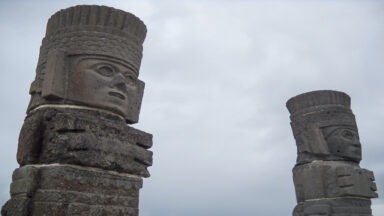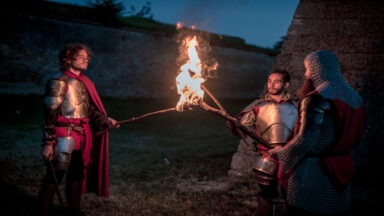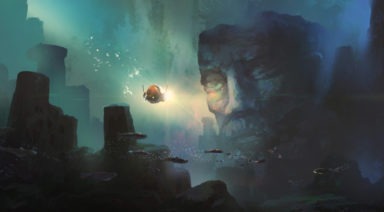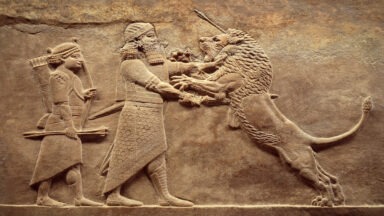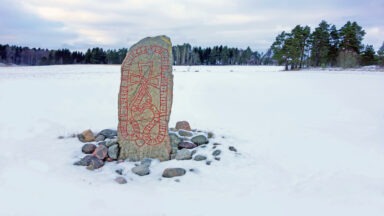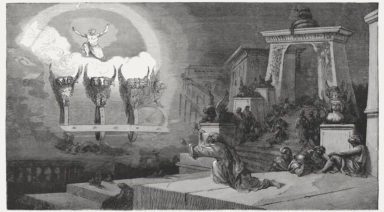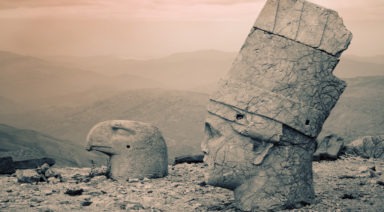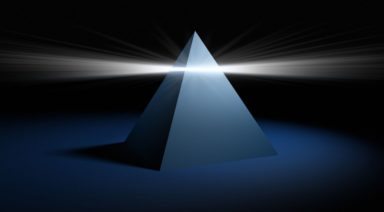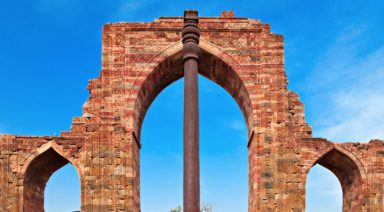Psychics and Archaeologists Solve History’s Mysteries
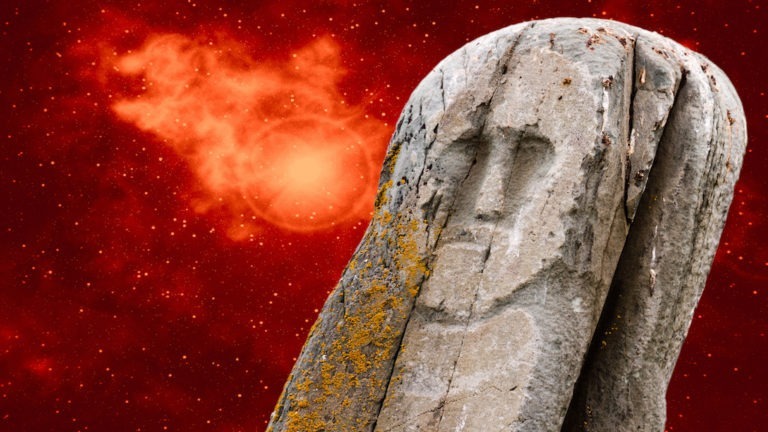
Archaeology can be frustratingly hit or miss — years of tedious digging can lead to nothing. Many discoveries occur during construction excavation, road building, and recently, by drone photography that reveals soil and vegetation disruption over ancient sites.
While most academic archaeologists dismiss psychic research methods for locating ancient objects and sites, others use them with great success, pinpointing exact locations for excavation. Below are examples of successful automatic writing, psychometry, and remote viewing in archaeological research.
Frederick Bligh Bond
Frederick Bligh Bond was a 19th-century British architect, archaeologist, and illustrator. The son of an Anglican minister, Bond was also a member of the London-based Society for Psychical Research (SPR), dedicated to understanding paranormal phenomena such as telepathy and ghosts.
Bond designed school and university buildings, a hospital, and once, a pub, over time becoming the U.K.’s foremost expert in church architecture and restoration. He was also fascinated with gematria, a Kabbalistic system based on the esoteric numerical value of Hebrew letters and words. By applying gematria to measurements of medieval religious structures, Bond discovered sacred symbolism designed into ancient churches, chapels, and abbeys, even if they were little more than ruins.
Bond’s Glastonbury Edgar Chapel Discovery
Glastonbury, in Somerset, is home to the ruins of a magnificent seventh-century abbey. Archaeological investigations show the area had been used or inhabited by occupying Romans and Saxons. While the site has a significant place in church history, it is also connected to Arthurian legends and is said to be the site of King Arthur and Queen Guinevere’s tombs.
The Anglican Church invited Bond, with his deep knowledge of church restoration, to direct archaeological digs at Glastonbury in 1908 — thus began the paranormal field of psychic archaeology in modern times. By combining his two passions, ancient religious sites and psychic exploration, Bond invented the controversial discipline, much to the dismay of academics and scientific method-based archaeologists.
Bond and his friend John Bartlett, another SPR member, devised a plan — to attempt to make contact with long-dead abbey residents via automatic writing. Glastonbury, the supposed site of the mythic Avalon, held other mysteries.
After his crucifixion, the gospels state that Christ’s body was entombed by his disciple Joseph of Arimathea. A wealthy man, Joseph had kept his devotion to his teacher hidden from authorities. Centuries later, legends placing him in the midst of Arthurian grail legends and Glastonbury history emerged. Some believed Joseph accompanied Mary Magdalene, said to be Jesus’s widow, and their child Judah, to the British Isles. Those legends continue to swirl around Glastonbury to this day.
Bond wanted to find evidence of the lost Edgar Chapel, founded by Joseph of Arimathea, on the site of the abbey ruins. In November 1907, he and Bartlett, using the automatic writing method, stated the question, “Can you tell us anything about Glastonbury?” They had no idea who might respond, but an answer came back; “All knowledge is eternal and available to mental sympathy.”
Many sittings and conversations later, Bond and Bartlett had coordinates for where to dig for the chapel foundation. In fact, there was a building foundation precisely where Bond directed workers to dig.
Eventually, Bond’s methods and discovery exploded into a maelstrom of controversy; church and academic communities turned their collective attention on debunking and denying the truth of Bond’s discovery. Blasting Bond for employing “pseudoscience,” the facts of the discovery were overlooked in favor of campaigning to discredit Bond and his methods.
The Sterkfontein Caves: Psychometry
In 1936, South African paleontologist Robert Broom found a skull in the Sterkfontein Caves. Classified as Australopithecus, the relic was evidence of a 3-million-year-old, extinct species on the human evolutionary ladder. Despite his rigorous scientific training (Broom was also a medical doctor), Broom had deep doubts about Darwin’s theories. He believed in a spiritual force that directed evolution. He said, as a paleontologist, he was guided by disincarnate beings, and was led to his discoveries by his unorthodox method.
Later in the 1940s, fellow South African John Talbot Robinson, also a paleontologist, accepted Broom’s methods. Working together, the colleagues went on to discover more of the Australopithecus fossil bones. Later, Robinson brought Geoffrey Hodson, a psychic and member of the Theosophical Society, to the caves to assist with research. Hodson went on to write “Clairvoyant Investigations” published by the Theosophical Society.
In his 1982 field notes, Robinson wrote that, during sessions with Hodson, he would place fossil specimens on the reclining psychic’s forehead. Even though Robinson randomly used different artifacts, he said of Hodson, “He never misidentified a specimen or gave conflicting statements about a specimen that had been presented more than once. As far as I could determine his information was always accurate and he gave me a strong impression of complete reliability.”

The Sterkfontein Caves, home of the major discovery of Plesianthropus transvaalensis. The area is known as the “Cradle of Humankind.”
Remote Viewing and Archaeology
Stephen A. Schwartz, author of the “Secrets Vaults of Time,” explored remote viewing as a valid archaeological research method. “I always approached remote viewing with the question, ‘can you do something with it?’ I don’t debate whether it is real, but how can we use it?”
Originally Schwartz, a distinguished consulting faculty member at Saybrook University and a research associate at the Cognitive Sciences Laboratory, wanted to use remote viewing to find black holes but needed access to a research telescope to confirm findings. When he found he could not access high-powered telescopes for a cognitive science experiment, he turned to archaeology. “I was looking for a double-blind opportunity,” he said.
He said archaeological discoveries are often simply serendipity — a farmer finds something in a field during spring ploughing, artifacts are found in road cuts during highway construction, and so on. But he wanted to improve the odds of discovery with remote viewing. In his research, he discovered that the ancients described methods identical to those used today. “In the 46th chapter of ‘Herodotus’ Histories’ there is the first outbound remote viewing, and it was done exactly as it would be done today — a double blind, outbound protocol.”
Herodotus wrote that Croesus, the King of Lydia (now Turkey), learned of a Persian plan to invade his country. The Persian army outnumbered the Lydians. Croesus sent emissaries to the seven oracles of the ancient world. He instructed them that on the 100th day after their departure from Lydia, they were to ask the oracles, “What is King Croesus doing?” They were to write each oracle’s answer. Only one gave correct information.
The Delphi oracle reported a vision of a lamb and a tortoise in a cauldron. On the 100th day, Croesus had indeed built a fire under a cauldron in his courtyard and put a butchered lamb and a tortoise inside, exactly as the oracle had described.
Croesus went back to the Delphi oracle, asking the outcome of a war with Persia. She said, “If you cross this river, a great empire will fall.” Interpreting the prediction incorrectly, Croesus and his army indeed crossed the named river, believing his own empire would prevail due to his view of the Persians being richer, stronger, and more powerful than the Lydian empire. Unfortunately it was the Lydian army who lost the war.
Schwartz learned of Bond’s discoveries at Glastonbury using automatic writing, but went on to research other examples of psychic discovery. He researched Polish experiments carried out with Stefan Ossowiecki, an engineer with psychic abilities. Ossowiecki and his cohorts carried out 39 experiments to discover the prehistoric origins of Poland — given that this was during Nazi occupation of the country, these were dangerous endeavors.
Another example is Canadian archaeologist C.S. Reed. Working with remote viewer George McMullen, in two hours they located an Iroquois site. Reed had been searching for the site for two years. Schwartz was able to find more than 10 examples of archaeologists successfully partnering with remote viewers using “non-local consciousness.”
There are countless examples of archaeological discoveries made with the assistance of any number of “psychic” methods — dowsing, psychometry, clairaudience, etc. As of yet, no one has found a limit to the applications for these abilities and techniques.
Ireland's Newgrange Tomb; A Megalithic Hub of Mystical Curiosity
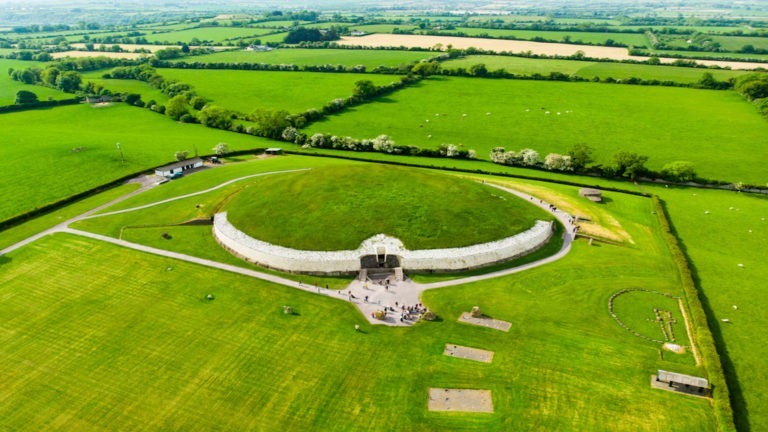
Built 5200 years ago, and during the Neolithic period (tail end of the Stone Age), the Newgrange megalithic tomb was constructed with alternating layers of dirt and rock and infused with the mystical curiosities. This earthen temple is 600 years older than Egypt’s Giza Pyramids and 1000 years older than Stonehenge. The building of Newgrange is a remarkable architectural feat. And some say it’s within one of the most popular flight paths for UFOs.
With a mesmerizing entrance stone, the Newgrange passage and tomb are adorned with beautiful circles, spirals, and radials. While the purpose of this ancient art appears to be decorative, many spiritually-minded scholars believe these etchings to be energy-creating emblems or metaphoric icons that relate to the sun, moon, and stars.
Healers and empaths say that Newgrange has an etheric quality to it, with remnants of energetic bodies no longer living in this physical reality. They believe the site to be a reservoir of healing energy for all walks of life.
Residents of the nearby Laytown say that unusual objects have been crisscrossing the night sky for as long as they can remember. More recently, unexplained crop circles have been appearing in neighboring areas. It seems the Gods are restless and trying to communicate.



